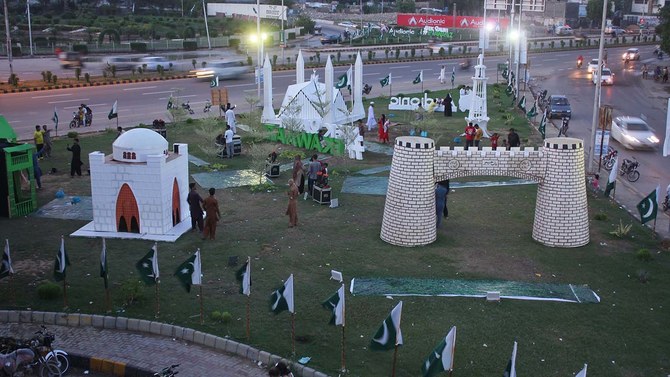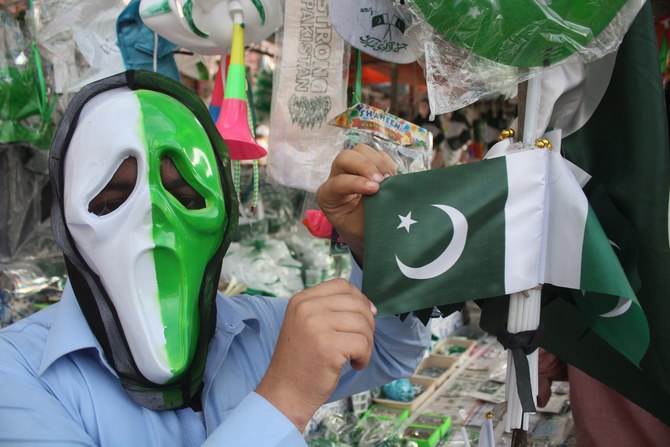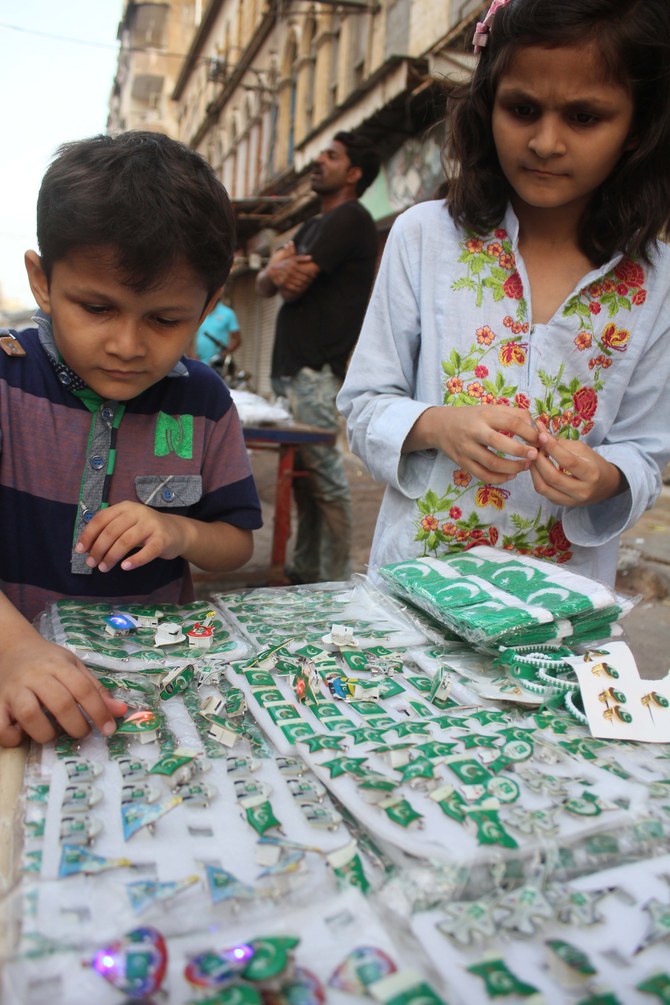KARACHI: As Pakistan gears up to celebrate its 73rd Independence Day on August 14 with traditional fervor, the business for traders selling national flag booms though not as much as previous years given the fact that Eid ul Adha related buying and torrential rains across the country have slowed down the otherwise booming seasonal business, traders say.
“The demand for national flags and decorative ornaments rises by 80 to 90 percent in the month of August mainly due to Independence Day celebrations,” Abdullah Abdul Habib, wholesale trader of Karachi’s paper market, told Arab News on Tuesday.
Every year, Independence Day related businesses activity mobilizes billions of rupees in revenue from sales and purchases of national flags, badges, hats, toys, special dresses with a touch of national flag and other decorative material, Habib told.
“This year, however, the business is almost down by 50 percent,” he added.
“The rains in the port city of Karachi which supplies goods to other part of the country disrupted Independence Day related business activities. Besides, concurrent event of Eid ul Adha also impacted the buying trend,” he said.
Pakistan meets 75 to 80 percent of its seasonal demand through imports that come from neighboring China. This year, the government’s measures to restrict imports in order to keep the balance of payment situation in control have also reduced the imports of flags and other decorative material.
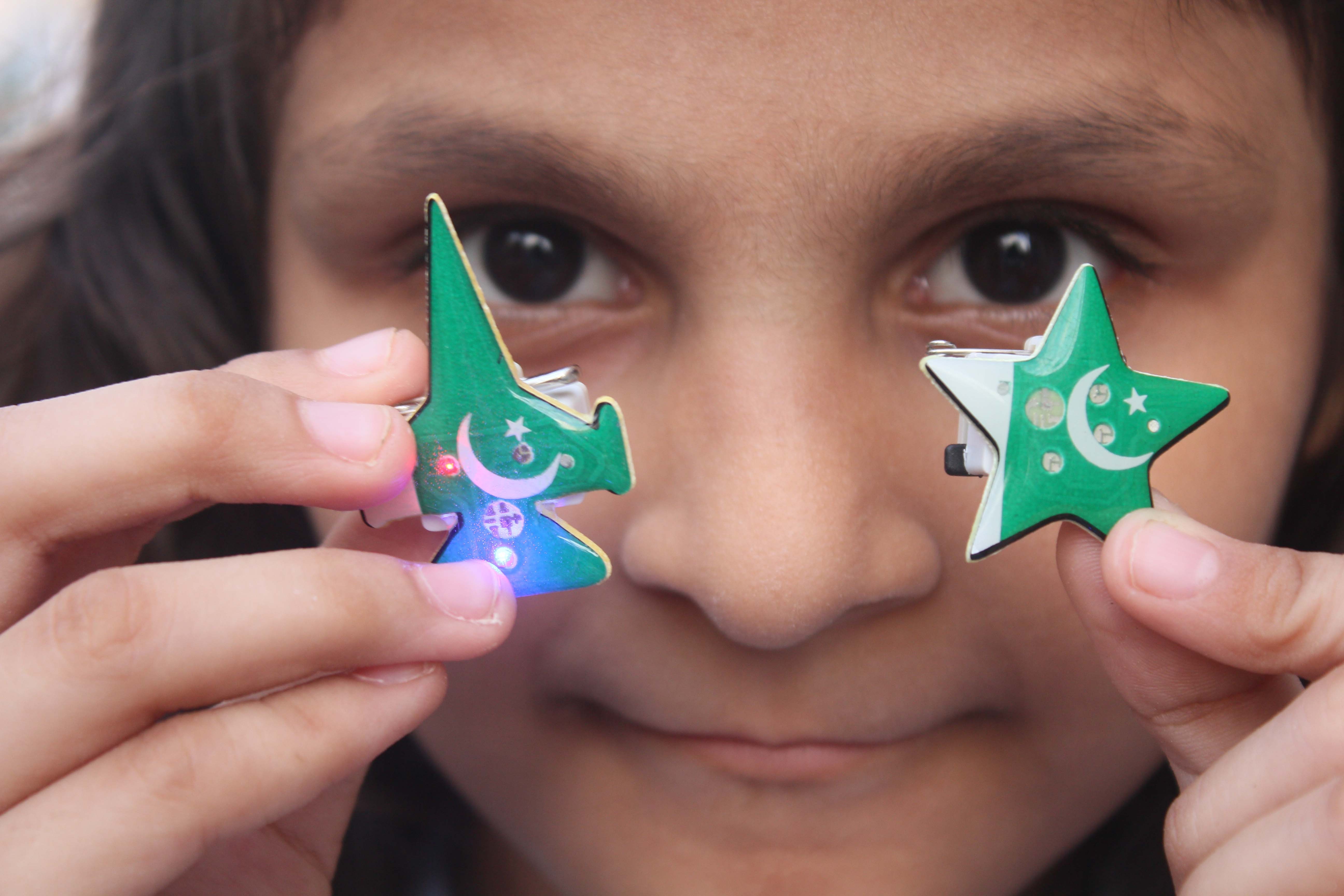
A young girl shows star and fighter jet models painted with Pakistani flag. (AN photo)
“The imports this year were largely constrained and what we are selling is the leftover stock of previous year. Due to duties and taxes, the goods have almost become 40 percent costlier than last year,” said Habib.
According to the traders, the flags and badges are available for as low as PKR 10 where the price increases with the size of the flag or stickers available for the event.
Colorful kiosks and make-shift stalls traditionally mushroom in cities and towns of the country in August where traders take the chance to cash in on Independence Day celebrations.
Muhammad Shoaib, a trader who set up a kiosk in the old city area of Karachi, finds this year difficult amid slowing business. “Last year, the business was very good but this year it is very slow because of rains and bad weather condition,” he said.
Many traders complained of growing prices of goods and blamed the incumbent government for the rising inflation that hit 10.3 percent in July 2019.
“Thank God, it is going on but not as good as it was last year,” Sarfarz Ahmed, a stallholder, said while adding that “people are coming to the market and we will celebrate Independence Day as usual innsha Allah.”
“Business was good last year and the income for children was much better and we enjoyed Independence Day as well,” said Shaam Lal, a vendor in Karachi, showing new green bangles for girls. “This year we are worried about our children,” he added.
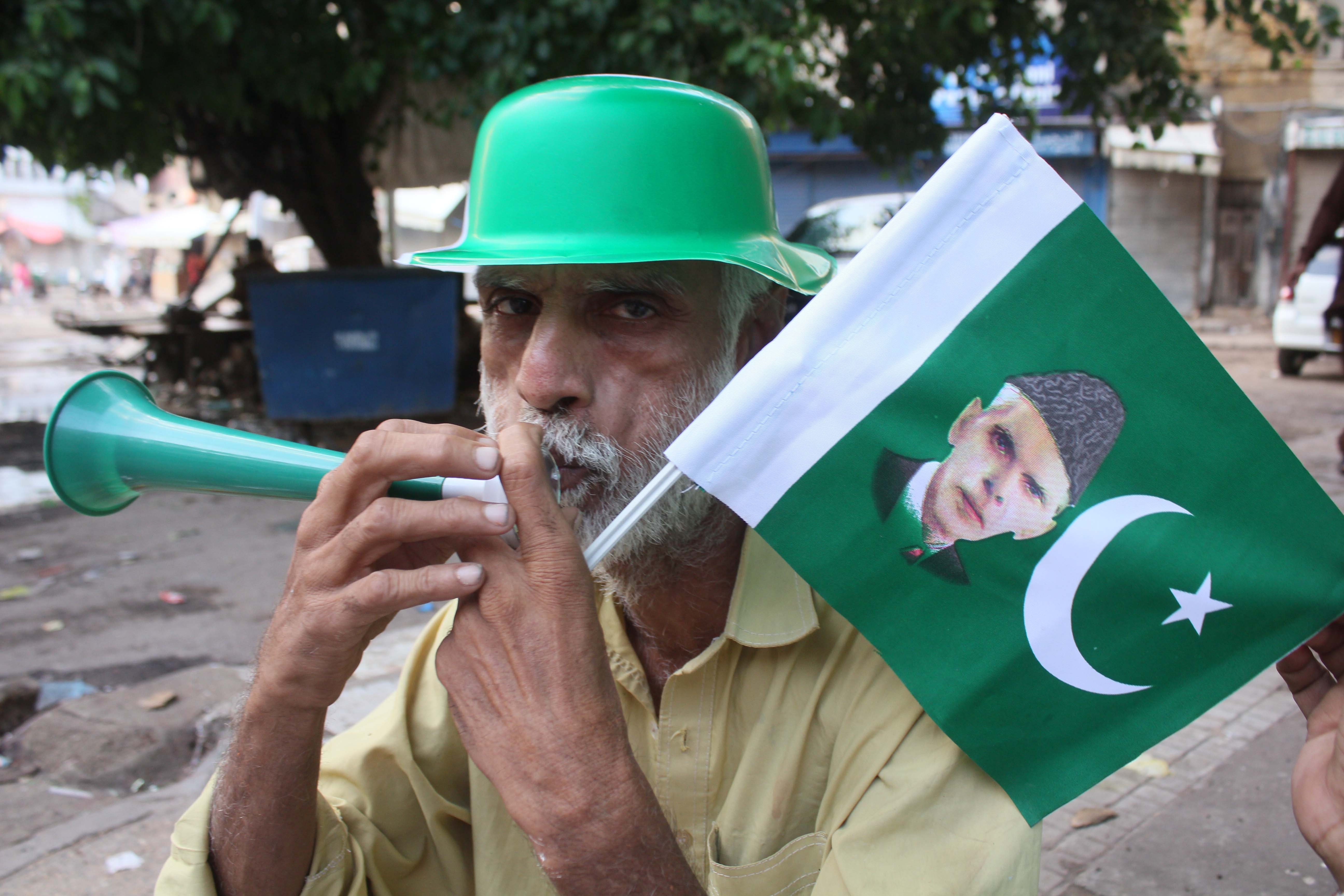
Laxman Das, a vendor, makes all out efforts to attract customers at a kiosk he set up to sell flags and toys for August 14 related celebrations. (AN Photo)
Among those selling flags, badges, trumpets and other stuff for Independence Day festivities for the first time is Laxman Das and his “trumpets are much in demand this year.”
But Ali Zaib, another vendor, is happy as his stuff has almost entirely sold out. “Business is very good. I have sold almost all this (shirts with national flag) stuff. People are celebrating (the event) you will see on 14 august,” he said.
Citizens busy with Eid ul Adha related activities are now coming out for shopping at kiosks and stalls set up in different areas in the city. “I have come with my children as they wanted to buy flags and buntings and badges for the national day,” Yasir Ali, a teacher based in the metropolitan city of Karachi, commented. In addition to flags, toys painted with national flag are a major attraction among children, he added.
Pakistan that came into existence on August 14,1947 with the partition of Indian subcontinent, will observe its national day in solidarity with the People of Jammu and Kashmir following an attempted annexation of the disputed territory by Indian government with abrogation of Article 370.
“We are with Kashmiris and support their struggle for freedom,” Zafar Iqbal, a resident of Lahore said adding “this year we are also buying flags of Kashmir along with Pakistani national flag.”


